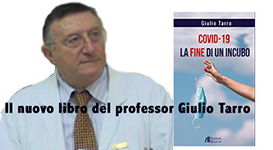E’ notizia recente che un apparato sperimentale statunitense, la National Ignition Facility (NIF) avrebbe compiuto un grande passo in avanti nello studio della Fusione Termonucleare Controllata, rendendo più vicina e più credibile la proposta della Fusione come una fonte di energia nella seconda metà di questo secolo.
Per la prima volta, in un reattore e non in una bomba, un plasma termonucleare è in grado di autosostenersi senza bisogno di apporto di energia dall’esterno per mantenersi “caldo” e in grado di continuare le reazioni di fusione. E’ l’ignizione: una meta inseguita fin dagli anni 50.
Leggiamo ovunque affermare che questo significhi “produrre più energia di quanto se ne consumi” (condizione di “breakeven”), ma non è corretto: l’ignizione è molto di più e molto meglio.
Un plasma ignito in un reattore a fusione è in grado di produrre energia sotto forma di neutroni molto veloci che – opportunamente rallentati e assorbiti nella struttura del reattore – vi depongono calore che, asportato da un fluido, serve a riscaldarlo e quindi, nei modi consueti dei cicli termodinamici, a produrre elettricità.
Questo mentre – sempre grazie all’energia sprigionata dalla reazione di fusione – il plasma ignito è in grado anche di badare a se stesso, mantenendosi alla giusta temperatura e densità per poter continuare a reagire senza apporti dall’esterno.
Idealmente, il parallelo con la “criticità” del primo reattore a fissione, la pila di Fermi del dicembre 1942, viene spontaneo e non può non entusiasmare.
Quasi nessuno di chi celebra questo passo in avanti, compiuto dalla tecnologia denominata “Fusione Inerziale Controllata” (ICF), però, oltre a confondere breakeven con ignizione, dimostra decente conoscenza dell’argomento: perché nell’ambito degli studiosi sulla fusione nucleare è noto anche ai sassi che la tecnologia della NIF è sviluppata in ambito militare, ed ha come scopo principale e dichiarato lo studio delle esplosioni atomiche termonucleari, in vista dello sviluppo di ordigni termonucleari di nuova generazione – e poi “anche” la produzione di energia.
Ancora come la Pila di Fermi, che fu il prototipo dei reattori plutonigeni del progetto Manhattan per la bomba atomica a fissione: di produrre energia se ne parlò dopo un decennio passato a produrre il plutonio per le bombe atomiche.
I pericoli che possono derivare dal cammino verso la fusione concepito dal progetto NIF e dalla “fusione inerziale” sono enormi, ed è per quel motivo che il cuore di questa tecnologia è protetto da segreto militare, ed è sviluppato con fondi provenienti dal ramo “difesa” dell’industria nucleare statunitense sulla fusione.
Stupisce, per non dire atterrisce, il giubilo ed ‘il suon di man con elle’ che hanno salutato questo primo passo di questa tecnologia verso lo sviluppo di nuovi ordigni termonucleari disponibili in larga scala e non disciplinati dal Trattato Internazionale di Non-Proliferazione Nucleare (TNP).
E’ oltremodo urgente che al riguardo si faccia chiarezza, e che questi progetti vengano sottratti, se possibile, al controllo di una sola Nazione, ma siano invece sviluppati dalla Comunità Internazionale, come i progetti sull’altro “tipo” di fusione, la fusione magnetica, come ad esempio il progetto ITER.
E’ altrettanto urgente che il TNP, datato 1968, venga aggiornato per includere queste nuove tecnologie fra quelle da sorvegliare per impedire la proliferazione della disponibilità di ordigni atomici a molti Stati che non li devono possedere, oltre che impedire un rifiorire di attività di ricerca e sviluppo del nucleare militare negli USA e negli altri paesi “atomici militari”, dopo che la moratoria di fatto sui test di bombe atomiche ha praticamente fermato lo sviluppo di questi ordigni a partire dagli anni 70.
Se saranno realizzate queste due premesse, allora si potrà più serenamente studiare il comportamento di un “burning plasma”, un plasma ignito e autosufficiente come quello ottenuto dal NIF: è importante, perché è la prima volta che succede, fuori dal Sole o dalle bombe termonucleari, e non si sa bene, non del tutto, come un plasma del genere si comporti, quali saranno le leggi di trasporto che le particelle cariche seguiranno in un caso simile.
Quanto abbiamo affermato prima appare forse eccessivamente allarmistico ed anti-progresso, come succede a volte per i vecchi scienziati di fronte alle novità?
Non crediamo sia così: per questo si fa seguire qui sotto una analisi più dettagliata del problema in lingua inglese: nihil novum sub soli, essa è tratta e riassunta da un articolo scientifico pubblicato dalla scrivente addirittura nel lontano 2011.
* Docente di Impianti Nucleari al Politecnico di Torino, Ricercatore presso il Massachusetts Institute of Technology, inserito nella cinquina finale dei candidati al Premio Nobel per la fisica del 2016 per le sue ricerche sulla fusione nucleare.
*****
Military and nuclear proliferation implications of Inertial Confinement Fusion
Abstract. A technical analysis of the environmental aspects related to the nuclear weapons proliferation implications of inertial (ICF) confinement fusion systems is performed, substantiating the main technical points, and showing that full access to the physics of thermonuclear weapons is the main implication of ICF. Magnetic Confinement Fusion (MCF) implies full access to large scale tritium technology as its main proliferation impact, which, however, shows lower proliferation problems than ICF.
Introduction
Nuclear fusion energy possesses clear advantages versus fission energy in the area of environmental impact, and also in the close one of non-proliferation. We mean by non-proliferation the requirements of the NPT (Non-Proliferation Treaty) that, signed in 1968, limits the possession of nuclear weapons to 5 nations (USA, Russia, Great Britain, France and China) and regulates the flux of nuclear materials of potential military interest.
Fusion has a low environmental impact. Whereas fission power stations produce spent fuel with half-lives of thousands of years, the only radioactive wastes produced from a fusion power station would be from the intermediate fuel, tritium, and any radioactivity generated in structural materials. The radioactivity of tritium is short-lived, with a half-life of around 12 years, and if chosen appropriately the structural materials have a sufficiently short half-life to not represent a burden for future generations.
Fusion is inherently safer than fission in that it does not rely on a critical mass of fuel. This means that there are only small amounts of fuel in the reaction zone, making nuclear meltdown impossible.
Under IAEA (International Atomic Energy Agency) statutes, at present none of the materials available in a fusion power plant are categorised as being of nuclear safeguards significance or require the Non-Proliferation Treaty controls. However, because fusion neutrons could be used to generate fissile material, fusion power plants will have to be subject to international safeguards. Such safeguards would be much cheaper and easier to enforce than in the case of fission, because one would be looking for fissile or fertile material in an environment where none at all should be present, in contrast to looking for small discrepancies in the large inventories of fission plants.
This paper contains an analysis of the nuclear weapons proliferation implications of inertial confinement (ICF) fusion energy systems, while a larger and broader analysis, and a comparison with compared to magnetic confinement (MCF) ones can be found in this paper by the author:
-
M. Zucchetti, Proliferation Implications for Thermonuclear Fusion,Journal of Environmental Protection and Ecology 12, No 4A, 2071–2080 (2011)
To summarize in one statement, while full access to the physics of thermonuclear weapons is the main implication of ICF, proliferation implications of tokamak MCF systems are largely inferior, however not negligible in principle.
It is quite important that magnetic fusion technology shows the lowest possible connection with any proliferation issue: this must be seen as one of its main goals, one of its clear advantages versus inertial fusion and fission. MCF could be the only nuclear technology not being born with the so-called ‘original sin’ of military application.
Many ancillary technologies associated with thermonuclear fusion and high-energy beams may be of military importance: high-power radiofrequency generation for radars and electromagnetic warfare; superconductivity and cryogenics for outer space military platforms; high magnetic field generation for magnetic compression and pure fusion explosives; pulsed power technology for flash X-ray radiography and electromagnetic guns; heatproof and heavy irradiation-proof materials and electronic devices for conventional and nuclear explosives; micro- and nano-technology for mass-producing 4th generation nuclear weapons, etc.
FUSION REACTORS AND TRITIUM
In the past decade there has been a growing awareness that the development of fusion systems is being accompanied by the spread of the knowledge and materials required for the production of thermonuclear weapons. This awareness is the result of a number of political and technical developments which shifted part of the nuclear weapons proliferation debate away from its traditional focus (namely the nuclear fission fuel cycle and its related enrichment and reprocessing technologies) and started to highlight the military problems associated with emerging nuclear energy systems: fusion systems for energy production and nuclear weapons simulation, accelerator-based concepts for energy amplification and tritium breeding, pulsed power technologies for civilian and military applications, etc.
The international agencies that regulate the flow of strategic materials have so far refused to classify tritium as a ‘safeguardable’ substance, that is, a material of relevance for military weaponry. The ostensible reason is that nuclear weapons can be manufactured without tritium, and therefore it is not an essential strategic material in the same way that plutonium or enriched uranium are. This is only technically true, since all nuclear weapons now being manufactured by nuclear weapons states almost certainly use tritium. A few grams of tritium are sufficient to ‘boost’ bombs made of a few kilograms of military – or reactor-grade – plutonium making them smaller and lighter than conventional designs and deliverable by missiles instead of bomber planes. ‘Boosted’ bombs contain only 4 kg of plutonium or 12 kg high-enriched uranium, weigh less than 100 kg and are about 30 cm in diameter. ‘Boosted’ bombs can be perceived as ‘user friendly’, since the possibility of accidental nuclear explosion is considered nearly impossible. in storage, the deuterium-tritium gas is contained in a separate reservoir outside the core, should an accidental explosion of the chemical explosives components occur, the relatively small amounts of plutonium or uranium involved would not be sufficient for a full nuclear explosion. This means that reactor-grade plutonium, which is relatively unstable and prone to spontaneous fission, could be utilised, at significantly reduced risk given the small amounts of material required in a ‘boosted’ bomb. ‘Boosting’ is essentially used in all modern nuclear weapons. The development of ‘boosted’ bombs thus confirms the importance of tritium to the issue of non-proliferation of fission weapons.
Experimental fusion reactors, as well the deployment of commercial scale fusion reactors, pose the problem of tritium proliferation, because their operation will imply the use of kilograms of tritium. Once operational, ITER (The Interna- tional Tokamak Experimental Reactor being built in France) tritium inventory will be about 2–3 kg: in fact, within the tritium plant of ITER, a total inventory of that amount will be necessary to operate the machine in the DT phase. During plasma operation, tritium will be distributed in the different sub-systems of the fuel cycle. Currently, the total amount of tritium in the US weapons stockpile is some 100 kg, an average of 10 g tritium per warhead: so the inventory of tritium in ITER would be enough in theory to boost many nuclear weapons.
A fusion reactor program gives a non-military justification to acquire an industrial scale tritium technology. With the construction of a large fusion reactor, large-scale tritium production in a non-nuclear weapon State becomes justified.
It is relatively easier to conceal significant amounts of tritium than of plutonium, and given that the required amounts are smaller (grams instead of kilograms), much less radioactive and more difficult to detect, effective procedures will need to be put in place to ensure the security of the material.
It must be pointed out – on the other hand – that safeguards against the diversion of tritium are quite easy to implement in the case of a nuclear fusion devices. Tritium will be present in a sizable amount only in a few systems, like for instance the tritium purification, storage and injection systems. However, there is a continuous and extremely detailed monitoring system for tritium in particular in every fusion plant. Record of such measurements can be easily kept under control by the inspection authority.
MILITARY AND PROLIFERATION NATURE OF INERTIAL CONFINEMENT FUSION (ICF)
As was already explained, many technologies relevant to thermonuclear energy have potential important military applications in nuclear and non-nuclear weapons. Lasers, accelerators, superconductive devices, etc. are key components of new kinds of non-nuclear weapons: Laser and particle beam weapons, electro- magnetic guns, etc. A clear example of the ambivalence of thermonuclear research with high-energy lasers is the project to use the technology developed for the US National Ignition Facility (NIF) to build an Earth-based laser to clear near-Earth space debris: such a device would also be an effective anti-satellite weapon.
The most direct proliferation contributions of ICF are obviously in the domains of thermonuclear weapons physics and effects. ICF poses special risks of vertical proliferation, such as the risk that it might contribute to the development of advanced nuclear weapons. If a reactor were to be available, the production of plutonium or 233U is possible, and safeguards will become necessary. From the theoretical background of ICF, lessons on high-energy plasma physics can be learned, that might be useful in the design of computer codes of nuclear explosion simulations. In case of a secret nuclear weapon program, experts on ICF theory might play a useful role. Other fusion concepts such as magnetic confinement fusion do not pose similar risks. Large ICF experiments can be used to replace underground nuclear testing to a certain extent, and thereby undermine the policy of stemming vertical proliferation. As long as ICF projects take place in international cooperation, their goals will be civilian and not nuclear weapons application, and the risk of vertical proliferation might be reduced to a certain extent. However, if a Nation is carrying out its own ICF programme, risks are much higher.
In 1997, in a review of the ICF program, the section about the ‘Relevance of the National Ignition Facility (NIF) to Science-based Stockpile Stewardship (SBSS)’ is highlighting the following items:
FONTE
https://contropiano.org/documenti/2022/12/18/per-inerzia-verso-nuove-bombe-termonucleari-0155407
Scopri di più da La voce Delle Voci
Abbonati per ricevere gli ultimi articoli inviati alla tua e-mail.


































